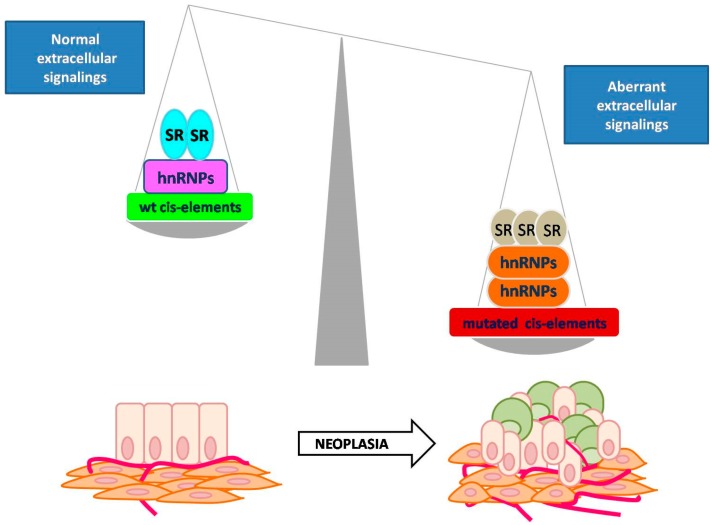Figure 3.
Connection between defective AS and tumor heterogeneity. Hypothetical mechanism explaining the connection between defective AS and tumor heterogeneity. AS has been shown as a mechanism regulating cell-lineage differentiation during embryogenesis. In adult tissues (on the left), the balance between antagonistic splicing factors (i.e., heterogeneous nuclear ribo-nucleoproteins) (hnRNPs) and SRs) contributes to the maintenance of cell differentiation. Cell adhesions and a well-defined epithelial shape (bottom left) characterize epithelial cells (light pink). In a physiological context, they receive oxygen and nutrients by blood vessels (red) and interact with surrounding stromal cells (orange). In a pathological context, aberrant extracellular signals or stochastic mutations dramatically affect the balance in antagonistic splicing factors (on the right) leading to tumor heterogeneity. Differentiated (light pink) and stem-like (orange) cancer cells coexist in the same tumor bulk. Their interaction with surrounding stromal cells may sustain neo-angiogenesis and activate invasive programs at later stages (bottom right).

